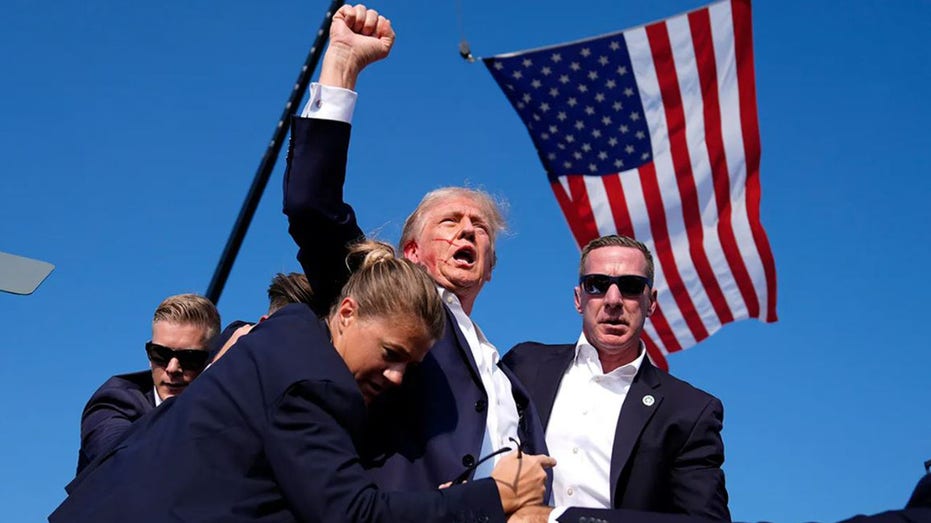These '7 deadly sins' almost cost Trump his life. When will we learn why?
It’s hard to imagine but former President Trump’s life was spared, not by the vast law-enforcement contingent protecting him, but by chance, by sheer luck.

Nearly two months after the shocking near-assassination of former President Donald Trump, Americans are still learning alarming details about the event. Just last week, as reported by Fox News, whistleblowers told Sen. Josh Hawley, R-Mo., "that Secret Service personnel are ‘woefully unprepared’ and have been given inadequate training to properly protect candidates – including former President Trump."
The senator shared this information in an appearance on "Jesse Watters Primetime." As Fox reported, the senator explained he had been told that when Homeland Security Investigations (HSI) agents were reassigned to work on the protective details, they were given a single two-hour webinar on Microsoft Teams. The videos were pre-recorded, with whistleblowers allegedly saying that the videos were riddled with technical mishaps."
While any act of political violence is shocking, video of the attempted Trump assassination, which has been rebroadcast countless times and seen around the world, is arguably the most jarring to the national public psyche since the attempted assassination of President Ronald Reagan in 1981.
It’s almost hard to imagine, but former President Trump’s life was spared, not by the vast law-enforcement contingent protecting him, but by chance, by sheer luck. A single, almost simultaneous round from a local officer likely disabled the assassin’s rifle and a shift in Trump’s stance toward the Jumbotron screen allowed the deadly rounds to whiz past his head, resulting in only a minor wound to his right ear. Sadly, others in the crowd were not as fortunate.
It has been said that any person willing to sacrifice their own life to take the life of another is a formidable threat to protect against. Yet it seems almost inconceivable to many that an otherwise unremarkable, but obviously troubled, misguided and attention-seeking 20-year- old loner, barely out of his teens, and bereft of any specialized training, equipment, or support, could penetrate to an elevated shooting position within 150 yards of the presumptive Republican Party candidate and former president of the United States.
Here are three key things we still don’t know about what happened in Butler, Pa., on July 13:
1. We still don’t know how this troubled young man was able to defeat the combined intelligence, expertise, planning, and coordination of local, state and federal law enforcement.
2. We don’t know how he was able to climb -undetected by Officers from nine agencies--onto the roof of a building 157 yards away and with a direct sight line of the main stage, with a military grade rifle, dozens of rounds of ammunition, a laser rangefinder, and a remote detonator to trigger an improvised explosive device in his car.
3. We don’t know why gunman Thomas Matthew Crooks used encrypted messaging accounts on various platforms located in Belgium, New Zealand and Germany.
So many questions, so few answers
As a former NYPD detective, who now runs his own national security firm, these are questions I've attempted to answer, not just to better protect my clients, but also to possibly inform government decision makers for best practices going forward. It’s critically important to mitigate a similar breakdown in protection for someone running for the highest office of the land.
Based on public testimony, sworn statements and time/date-stamped text messages, I have learned that there were many rudimentary and significant gaps in coordination, communication, and planning by the Secret Service and the local police. These are failures that must be rectified before it is too late. I have identified, assessed and correlated these failures. I’ve put together a list of what I call the "seven deadly sins" of July 13:
The Seven Deadly Sins
• No drones
• No snipers on the roof of Building 6
• No direct communications
• No unified command post
• No radios
• No briefings
• No written plan.
What’s Next?
Since July 13, multiple investigations have been launched, both into the crime itself and how law enforcement allowed it to happen. It is becoming increasingly clear this was a complicated failure involving multiple missteps and at least nine local and federal law enforcement divisions that were supposed to be working together. There are still plenty of questions and the American people deserve answers.
CLICK HERE FOR MORE FOX NEWS OPINION
In the weeks since the shooting, there has been some good news. The Secret Service has increased coverage for former President Trump and dispatched some members of President Joe Biden’s protective detail to assist with advance planning for campaign rallies and other events. They have also seriously tightened perimeter access to Mar-a-Lago and other venues with manpower and technology.
The Secret Service has also announced that it will use ballistic glass to protect former President Trump so that he can resume outdoor campaign events, according to two sources familiar with the planning.
These mitigative steps will likely decrease the probability of a copycat, or similar incident, but the questions keep coming. What took so long? Why did it take the murder of a decorated firefighter, and the critical wounding of two civilians, and a bullet through a former president’s ear, before these increased security steps were undertaken?
Time is the enemy of investigators: eyewitnesses vanish, or their recall becomes cloudy; ear witnesses vanish, or their recollection becomes spotty. We cannot, we must not, allow this to happen -- the American people deserve the truth.


